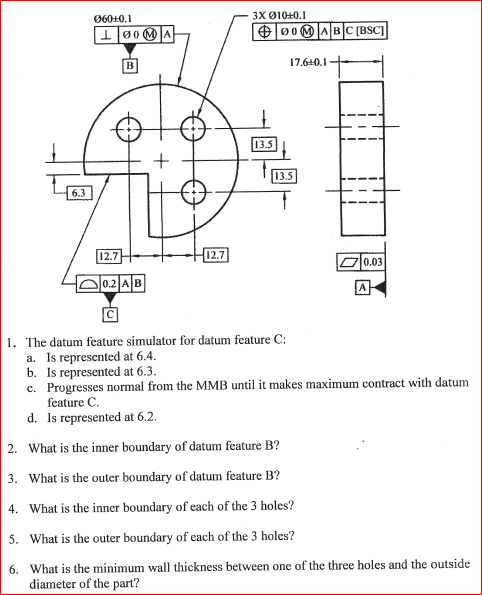gabimo
Mechanical
- May 2, 2013
- 124
I am able to calculate the minimum wall thickness specified on question #6, but I am not able to get the “correct” answer from the book.
Anyone, would be interested to get their GD&T and math skills sharpened?
I can post my answer: 6.1655.
Book’s answer is 5.6083, but I do not understand why.
Thanks
P.S. I agree with 1-5 answers from the book, but not with 6.

Anyone, would be interested to get their GD&T and math skills sharpened?
I can post my answer: 6.1655.
Book’s answer is 5.6083, but I do not understand why.
Thanks
P.S. I agree with 1-5 answers from the book, but not with 6.

